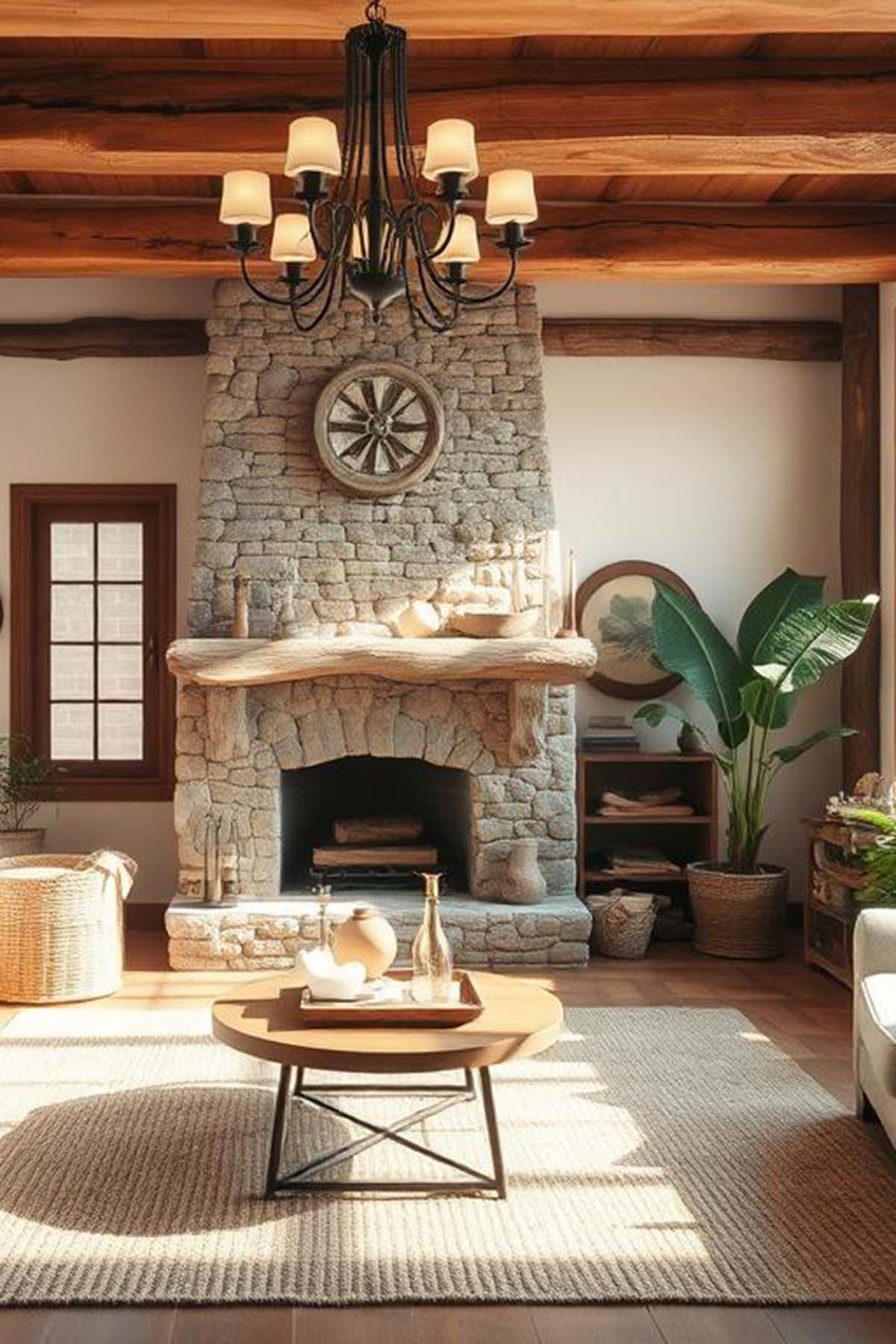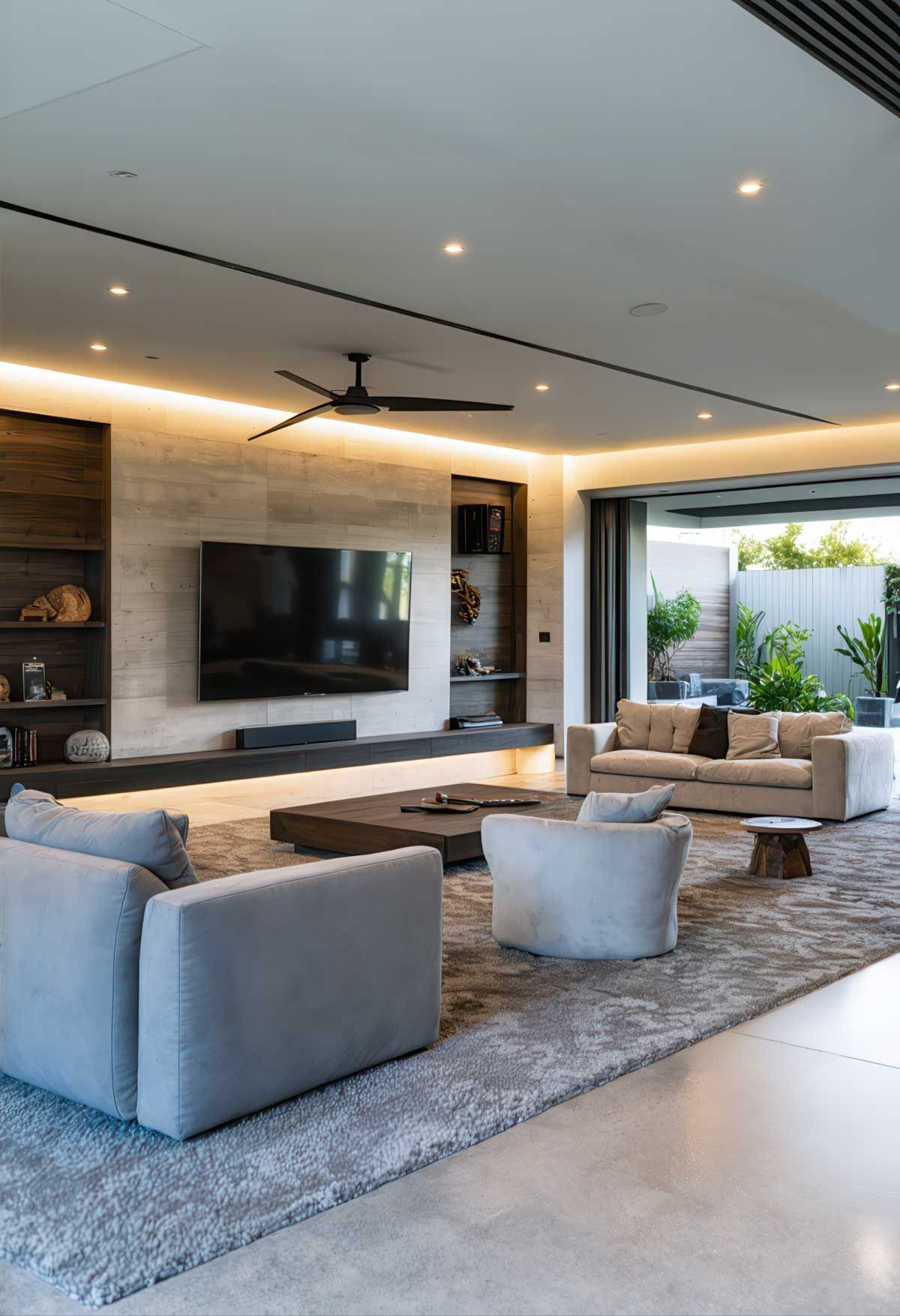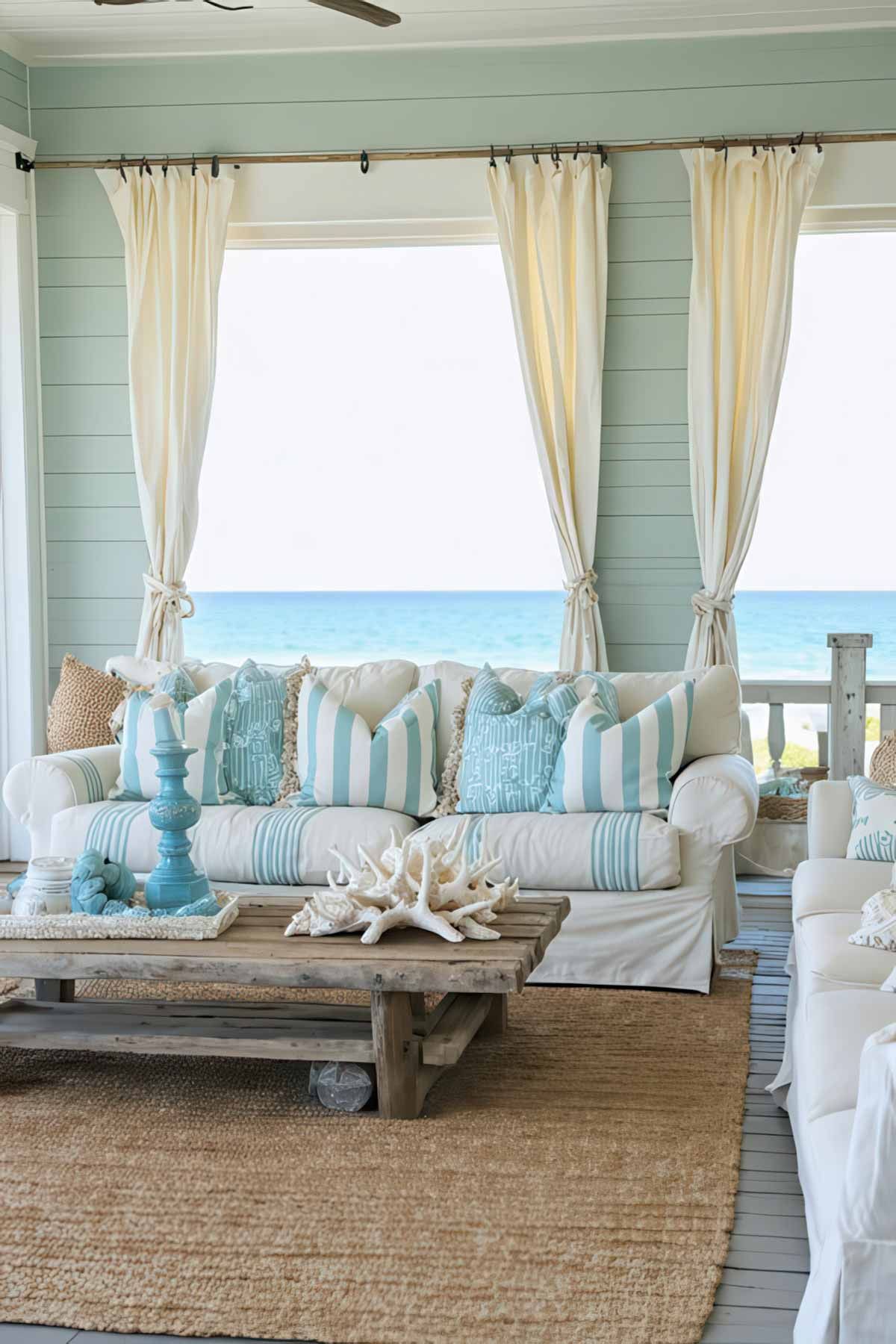Discover Mission Style Living Room Furniture For Your Home
Mission furnishings Without Looking Dated
The clean lines and honest craftsmanship of mission style living room furniture are truly appealing. I've always admired how these pieces add warmth and character to Australian homes. They also maintain a timeless quality that stands the test of time.
This style emerged in the late 19th century as a refreshing change from Victorian designs. Craftsmen were inspired by Spanish missions in California. They focused on simplicity and functionality in their work.
In this guide, I'll share my insights on adding these beautiful pieces to your modern living space. We'll look at choosing statement items and transforming rooms with mission style furnishings.
If you love the rich woods, sturdy construction, or understated elegance of this style, you're in for a treat. You'll get practical tips for bringing this timeless aesthetic into your Australian home. Let's start our journey into this world of authentic, grounding design.
The Rich Heritage of Mission Style Furniture
When I first saw mission style furniture, I was not a fan. It seemed dowdy and ugly and all shades of brown. However, when done right, this style can be lovely and you will find yourself drawn to its simple beauty and rich history. These pieces speak to our longing for realness in a world that values quick fixes. They offer a genuine connection to the past.
Mission style furniture celebrates craftsmanship in a time when mass production was on the rise. Its simplicity yet sophistication has made it a favourite in Australian homes. This balance is rare and explains its lasting appeal.
The clean lines and solid build of mission décor bring a sense of permanence.
Homeowners love these qualities for creating spaces that feel grounded and timeless. They prefer these over trendy, fleeting designs.
Origins in the Arts and Crafts Movement
The mission style movement was a rebellion against the ornate Victorian furniture of the late 19th century. It was a response to industrialization, promoting handcraftsmanship and natural materials.
Leaders like Gustav Stickley in America and William Morris in England led this movement. They believed furniture should show the maker's skill and use natural materials. Stickley's work, in particular, became known as mission style, with its straight lines, exposed joinery, and quarter-sawn oak.
This movement was more than just about furniture. It was about improving lives and working conditions through beautiful, well-made objects. The rejection of Victorian excess in favour of simplicity and function created a timeless design language.
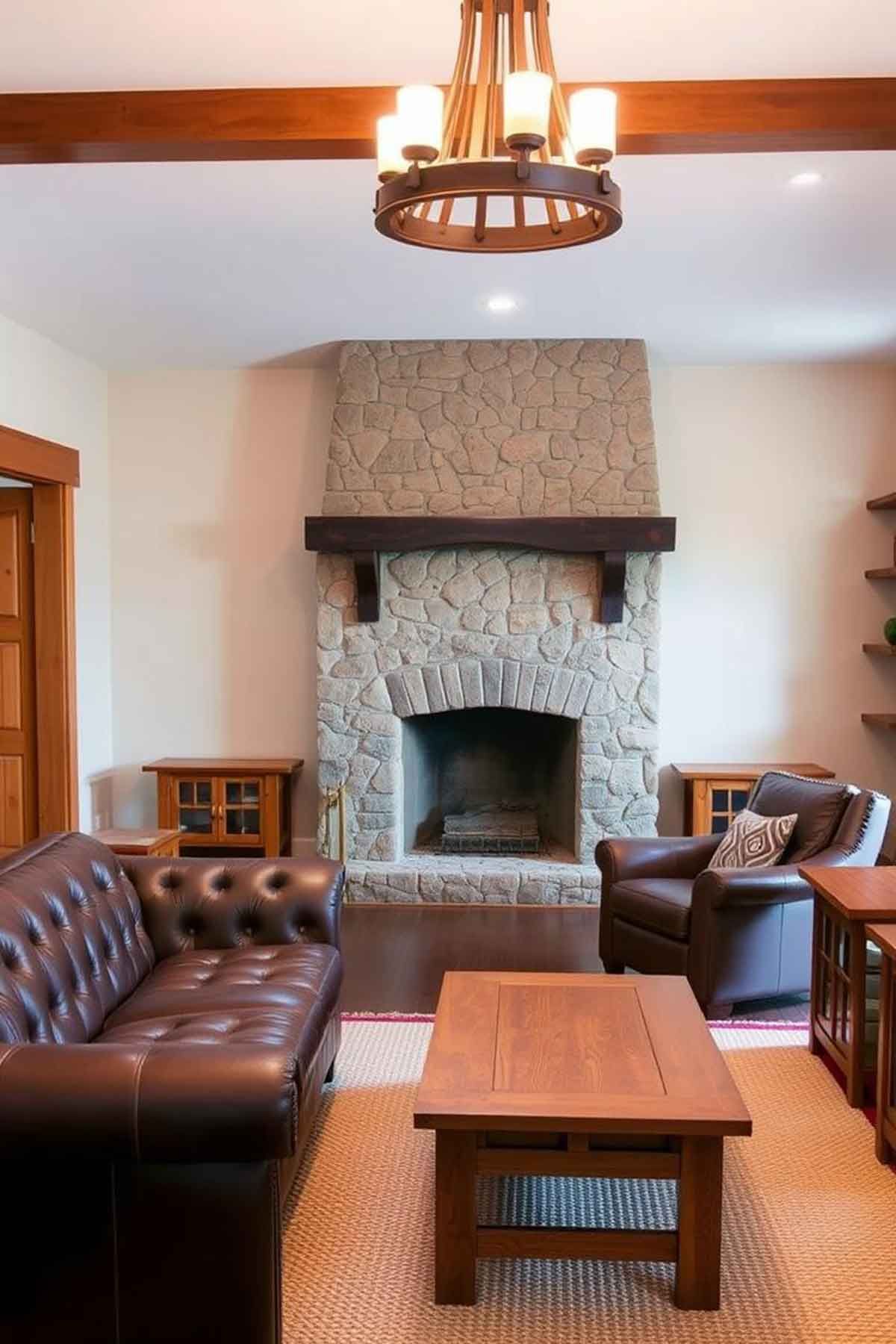
Evolution of Mission Style Through the Decades
Mission style was popular in the early 1900s but declined during the Art Deco era of the 1920s and 30s. Sleeker, more modern designs became the focus.
But, meaningful design movements never truly fade away. They just wait for people to rediscover them. The 1980s saw a revival of interest in mission style, as people sought a break from the plastic and chrome of the past. Sadly we all know the 80's wasn't the best design era and a lot of the Mission style decor from that time is a little overdone and often not nice to look at.
Today, mission decor has evolved to include modern elements while keeping its core values. In Australian homes, I've seen beautiful updates that honour the style's heritage while fitting our lifestyle and climate.
Mission style remains relevant because of its versatility. It suits both heritage homes and modern spaces. Its focus on natural materials and honest construction speaks to our desire for sustainability and authenticity in home design.
Defining Characteristics of Mission Style Living Room Furniture
I've always been drawn to the unique features of mission style living room furniture. primarily because it looks so comfy! It's easy to spot in any room. Let me share what makes mission style furniture special and how to find genuine pieces for your home.
Signature Design Elements
When I think about this decor style, its the mission style's honest design that rings true for me. It's all about simplicity and strength, not fancy decorations. While its not my personal design taste I can appreciate it done right.
Straight Lines and Exposed Joinery
Mission style furniture is known for its clean lines. It's different from Victorian styles, which are more ornate. The exposed joinery is a key feature.
The visible joints show off the craftsman's skill. They're not flaws but signs of quality craftsmanship.
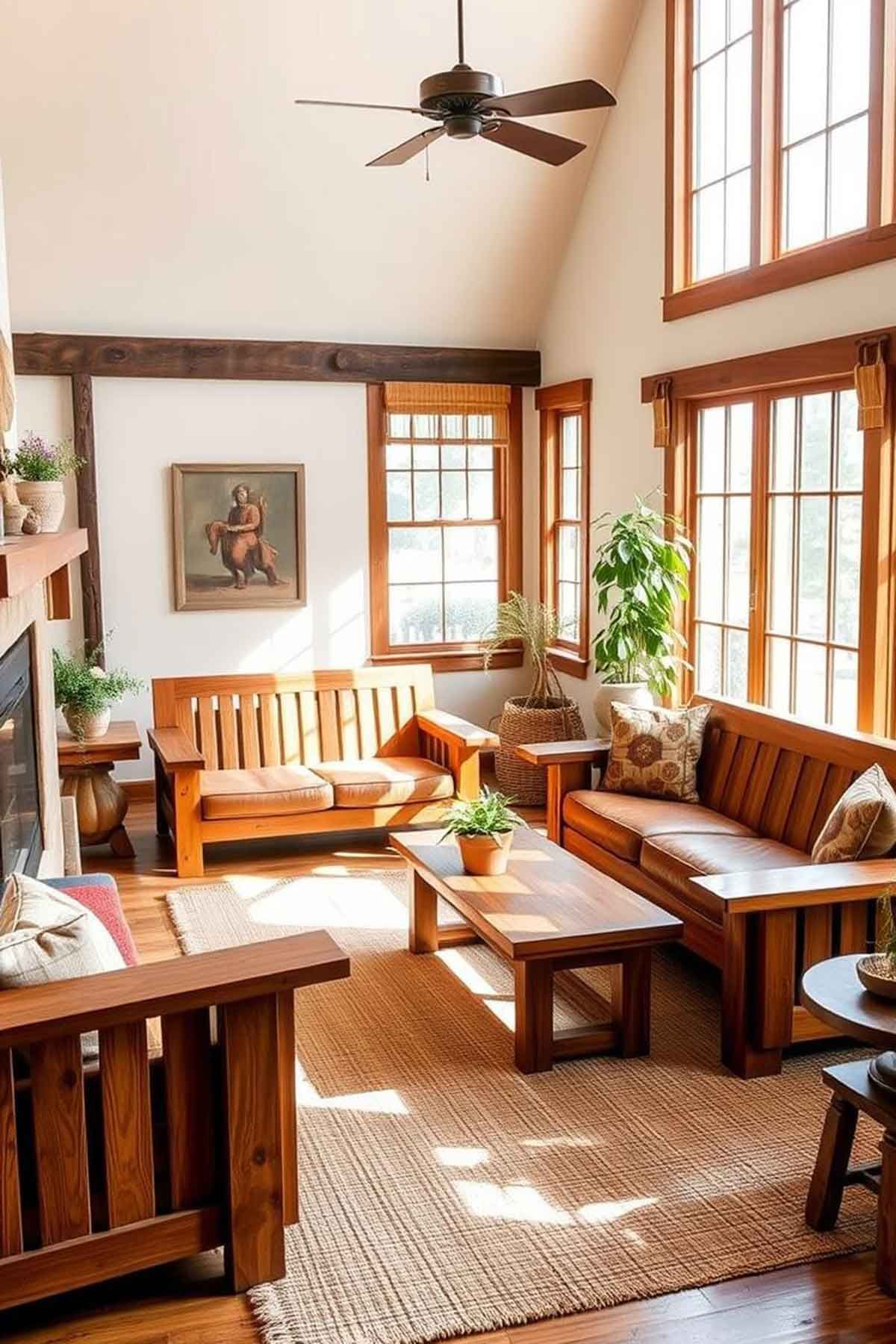
Vertical Slats and Geometric Patterns
The vertical slats on furniture are a big giveaway of mission style. They create a nice rhythm and keep the design simple.
These slats add interest without extra decorations. They show the style's focus on honesty in design.
Traditional Materials and Craftsmanship
Real mission style furniture is about more than looks. It's about the materials used, like quarter-sawn oak.
I check the wood's grain by touch. The unique patterns in oak add beauty to the furniture.
The mission style celebrates the inherent beauty of natural materials and the skilled hands that shape them into functional art.
The craftsmanship in mission pieces is clear in every detail. Techniques like mortise and tenon joints make these pieces last long. I've seen them stay beautiful for decades.
Colour Palettes and Finishes
Mission style furniture is warm and natural. I suggest medium to dark stains to bring out the oak's beauty. In Australia, lighter finishes are popular to match the natural light.
The colours are earthy and timeless:
- Rich browns that highlight the wood's natural warmth
- Deep greens for upholstery that complement wooden frames
- Russet reds that add warmth without overwhelming
- Amber golds that echo the honeyed tones in quarter-sawn oak
These colours work well with the wood, creating a cozy yet elegant space. When choosing mission style furniture, these traits will help you find pieces that truly embody this classic style.
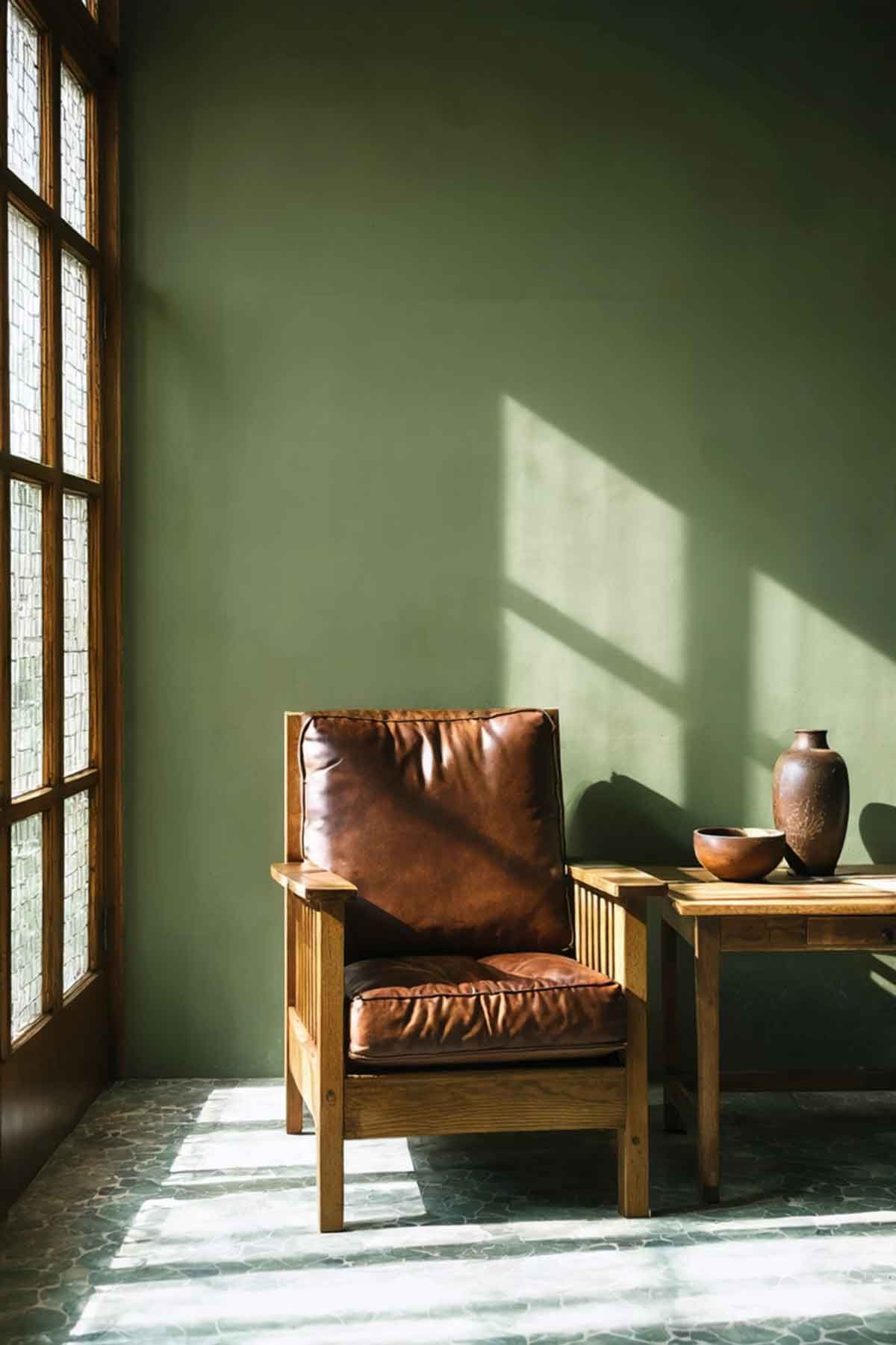
Essential Mission Style Living Room Furniture Pieces
Creating a mission style living room starts with key furniture pieces. Each item should show the mission style's unique traits. This design tradition is all about harmony and inviting spaces.
I guide clients in choosing essential pieces. These must have clean lines, solid build, and natural materials. This ensures a timeless look.
Sofas and Loveseats
Mission style sofas and loveseats are key in any living room. Their wooden frames are sturdy and visually striking. The exposed wooden arms and legs show off the mission style's simplicity.
Choose leather or earth-toned fabrics for the cushions. This contrast adds both beauty and comfort. Quarter-sawn oak is traditional, but cherry and walnut offer different looks.
Chairs and Recliners
The Morris chair is a must-have in mission style living rooms. It's both a historical piece and comfy. Pair it with an ottoman for the ultimate cozy spot.
Mission armchairs with slat backs are great for adding style. They look structured but feel surprisingly comfy. Guests often comment on their comfort.
For smaller spaces, consider armless side chairs. They bring the mission style's charm without taking up too much room. These chairs are versatile and can be easily moved.
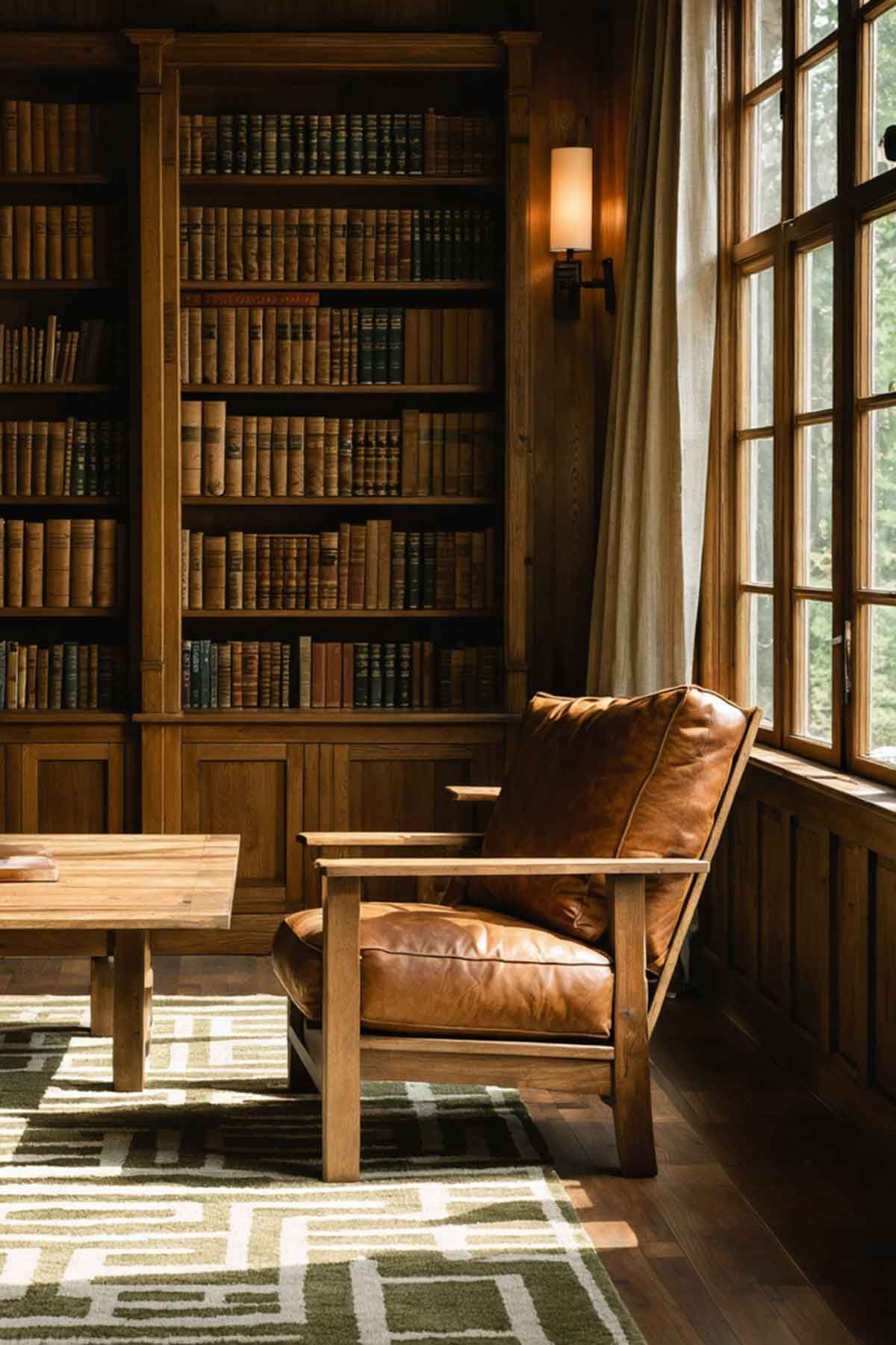
Coffee Tables and Side Tables
Mission coffee tables have large tops and visible joinery. They should have drawers for storing small items. These tables are both beautiful and practical.
Side tables are similar but smaller. Match them with your larger furniture for a cohesive look. Look for useful features like magazine racks or small drawers. The best mission tables show off the wood's natural beauty through simple designs.
Bookcases and Display Cabinets
Bookcases and display cabinets highlight mission decor. They make rooms feel taller and are great for showing off items. These pieces are perfect for books, pottery, and more.
Choose bookcases with adjustable shelves and glass-fronted cabinets. They protect items while keeping them visible. Look for small decorative touches like cutouts or copper hardware.
| Furniture Type | Key Features | Ideal Materials | Typical Dimensions |
|---|---|---|---|
| Mission Sofa | Exposed wooden frame, straight arms, cushioned seats | Quarter-sawn oak, leather or wool upholstery | 78-84" width, 36" depth |
| Morris Chair | Adjustable reclining back, wide arms, loose cushions | Oak with leather or fabric cushions | 30-32" width, 36-40" depth |
| Coffee Table | Rectangular top, visible joinery, lower shelf | Solid hardwood, often oak or cherry | 48" length, 24-30" width |
| Bookcase | Vertical slats, adjustable shelves, solid construction | Quarter-sawn oak or similar hardwood | 36-48" width, 12-16" depth, 60-72" height |
Why Choose Mission Style Living Room Furniture
Mission style living room furniture is popular for good reasons. It offers practical benefits that many homeowners value. Those who choose mission style pieces rarely regret their decision. Instead, they often come back to add more pieces to their collection.
There are three key reasons why mission style furniture is a smart choice for your living room.
Durability and Longevity
Mission style furniture is built to last for generations, not just a few years. It stands out in a world where furniture is often thrown away quickly. The solid hardwood, usually oak or quarter-sawn white oak, makes these pieces very strong.
These pieces have reinforced joinery, like mortise-and-tenon connections and dovetail drawers. This means they can handle daily use for decades. One client told me, "I've moved house four times, and my mission sofa still looks as good as the day I bought it." This durability makes mission style furniture a real investment in your home's future.
Timeless Aesthetic Appeal
Mission style furniture has a timeless appeal that never goes out of style. Its clean lines, exposed joinery, and natural materials create a look that has lasted over a century.
I've seen mission pieces in both old and new homes, and they work well in both. Their simple design adds elegance without overpowering the room. Mission style furniture offers:
- A sense of permanence in a world where things are often thrown away
- Visual stability that balances other design elements
- A connection to authentic craftsmanship traditions
- Warmth without unnecessary ornamentation
Versatility in Home Design
Mission style furniture is surprisingly versatile. I've helped clients use these pieces in many different interior designs. From traditional to contemporary, rustic to minimalist, mission style fits right in.
In Australian homes, mission pieces work well in both coastal and urban settings. The focus on natural materials and craftsmanship aligns with Australia's love for sustainable design. Mission style living room furniture also pairs well with other materials like stone, leather, wool, and metals. This means your investment will continue to look great even as your tastes change.
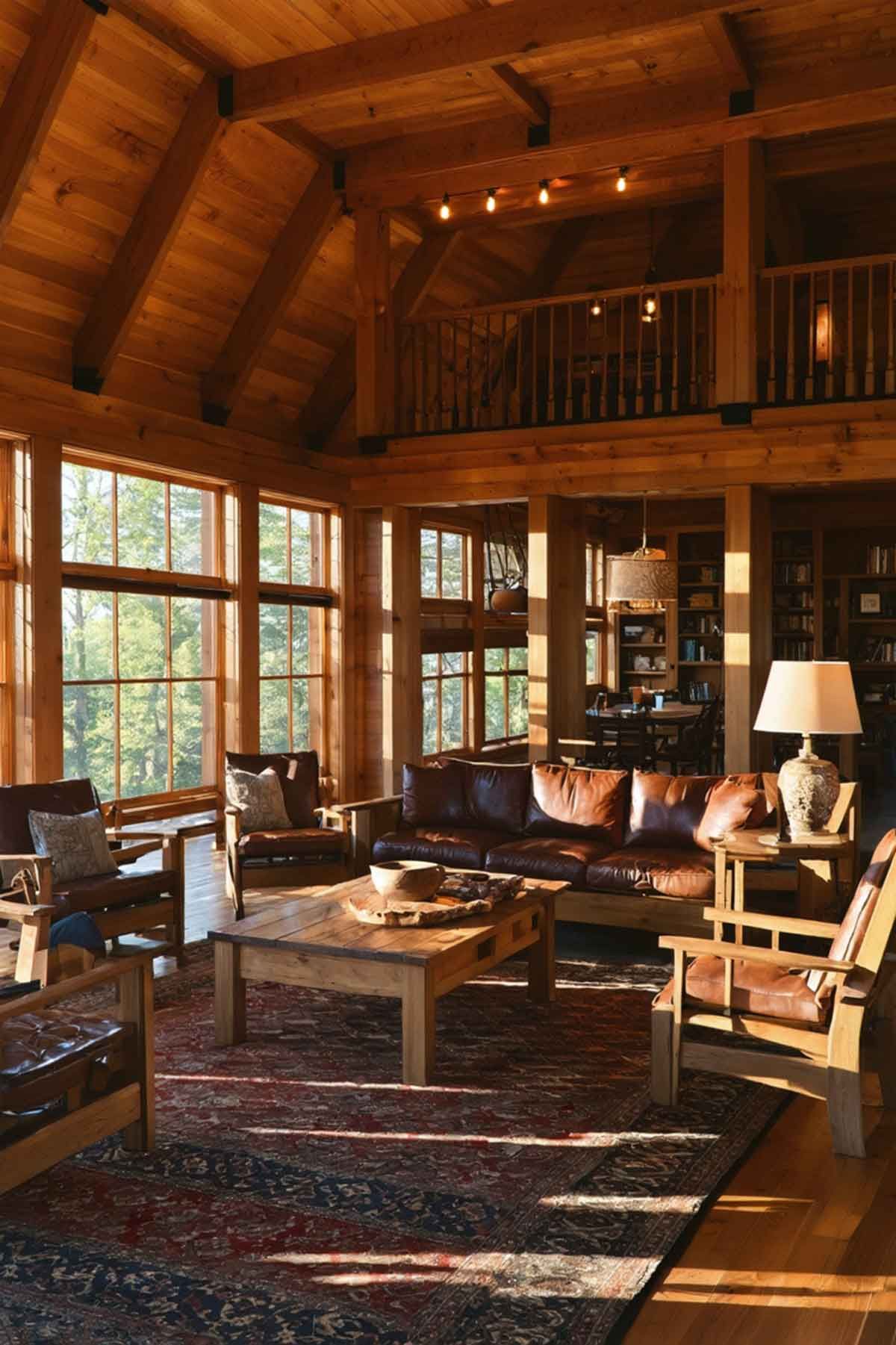
Incorporating Mission Style into Modern Australian Homes
Adding mission style pieces to modern homes brings warmth and character. I've helped many homeowners blend these classic designs into their contemporary spaces. Mission style furniture is versatile, adding depth to a room while letting other designs stand out.
Whether it's a craftsman bungalow in Melbourne or a sleek apartment in Sydney, mission style furniture adds elegance. Its straight lines and honest craftsmanship fit well in today's homes.
Blending with Contemporary Design Elements
"How can I use mission furniture without my home looking like a historical museum?" This is a common question. The answer is balance and contrast. I suggest using mission style furnishings as anchor pieces, like a substantial bookcase or a handcrafted sofa, and mixing in contemporary elements.
Light-colored walls are a great neutral backdrop for darker wood tones. Try pairing a mission coffee table with a modern sectional, or a sleek lamp atop a mission side table. This mix creates visual interest and prevents one style from dominating.
Glass accessories and metallic accents can lighten the look of mission pieces. Contemporary artwork on mission bookshelves creates a dialogue between past and present. The goal is to let mission decor ground the space while modern pieces add freshness.
Adapting Mission Style for Australian Climates and Lifestyles
Australia's climate and indoor-outdoor lifestyle require thoughtful adaptation of mission style. Natural light is both an opportunity and a challenge. Place mission pieces where they catch sunlight to highlight the wood grain, but use UV-protective window treatments to prevent fading.
In warmer regions, mission pieces with leather upholstery are recommended. Leather stays cooler and ages well with wood. Opt for lighter wood stains, like quarter-sawn oak in honey tones, for our sunny environments.
Extending mission decor to covered patios and verandas complements the indoor-outdoor lifestyle. Many manufacturers offer weather-resistant mission designs.
Combining mission's earthy solidity with coastal influences works well in Australian homes. The contrast between wooden furniture and light, breezy textiles creates a balanced atmosphere. This is perfect for our laid-back yet sophisticated lifestyle.
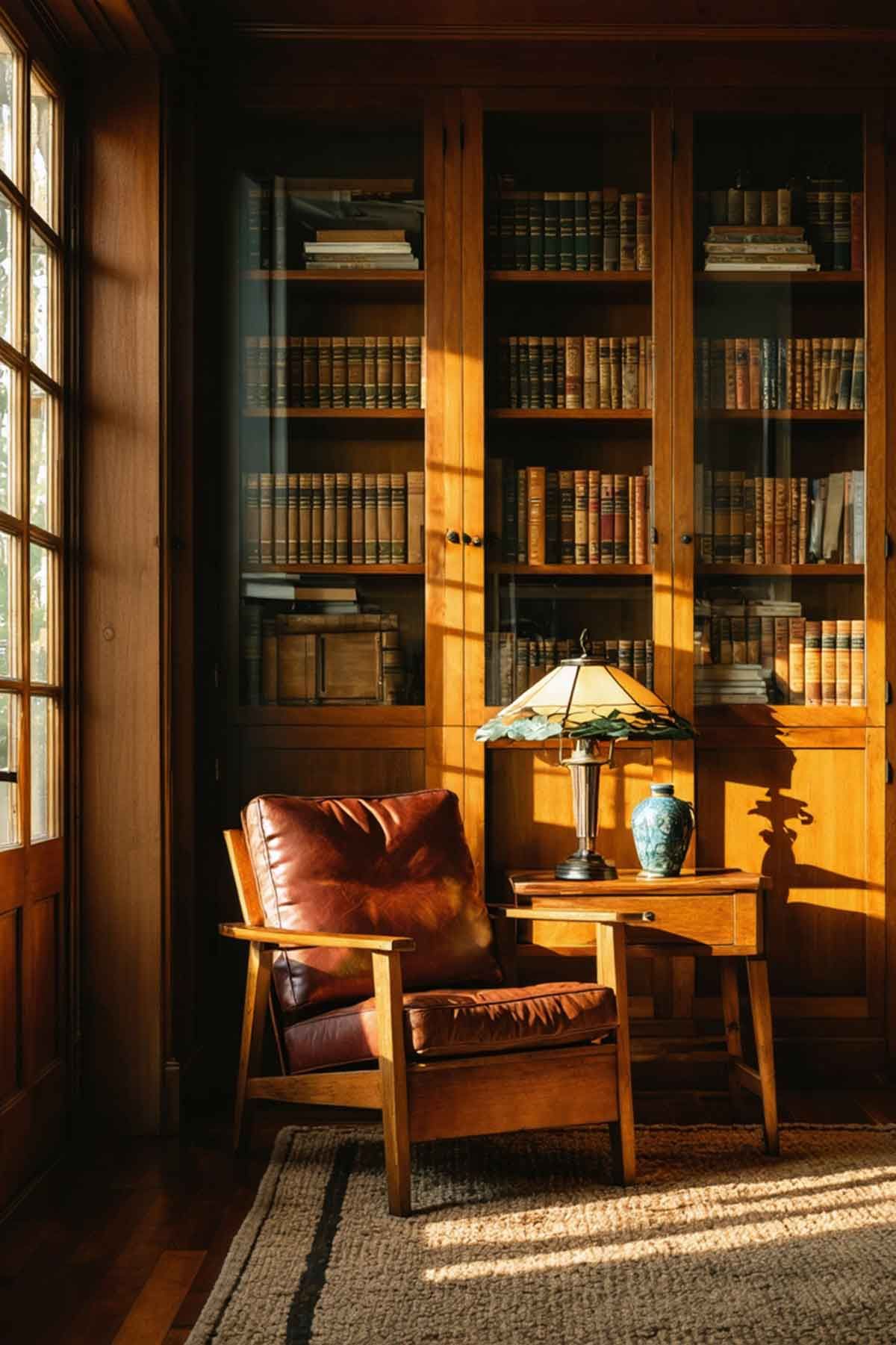
Selecting Quality Mission Style Living Room Furniture
The market has many options, from real handcrafted pieces to fake ones. Knowing the difference is key to finding furniture that lasts.
When looking at mission style furniture, I check several things. These include how it's made, the materials used, the finish, and the hardware. These factors affect how long the furniture lasts and if it looks authentic.
Identifying Authentic Craftsmanship
Real mission style furniture shows its construction. I tell my clients to look beyond the surface. True mission furniture celebrates its making. Check the edges and corners for smoothness and quality.
Quality pieces feel solid and stable. Shake them gently to test their strength.
Joinery Techniques to Look For
The joinery in mission furniture tells a lot about its quality. I look for specific techniques:
- Mortise and tenon joints at key points
- Dovetailed drawers that slide smoothly
- Exposed tenons with visible pegs
- Quarter-sawn lumber with distinctive patterns
The beauty of mission furniture is in its honest construction. Visible joints add to its beauty, not hide it.
Finish Quality Indicators
The finish should highlight the wood's beauty, not hide it. I look for:
- A finish that shows the wood grain well
- Even application without flaws
- A smooth feel with the right sheen
- Hand-rubbed oil finishes that enhance the wood
Check pieces in natural light. Quality finishes have depth that's hard to achieve with mass production. Minor color variations are a sign of natural materials.
Wood Types and Their Characteristics
The wood choice affects the furniture's look and durability. While white oak is traditional, other hardwoods are also beautiful.
Each wood adds its own touch to mission furniture. Oak is classic, while cherry adds warmth. For those who care about sustainability, local hardwoods are a good choice.
Hardware and Detailing
The hardware should be sturdy and functional. Never flimsy or just for show.
Authentic mission hardware is made of hammered copper, oxidized brass, or oil-rubbed bronze. These materials get better with age.
Check the detailing carefully. Mission style is simple but purposeful. Too much decoration is a sign of fake furniture.
Look for small imperfections and slight asymmetries. These are signs of handcrafted pieces. They show that humans, not machines, made your furniture.
When shopping for mission style furniture in Australia, take your time. Quality pieces are an investment. They will last for years and become family treasures.
Creating a Complete Mission Style Living Room
Creating a Mission style living room is more than picking furniture. It's about how you arrange things, the lighting, and the accessories. The best Mission interiors balance looks and function. They feel real and personal, showing off the style's beauty and simplicity.
Furniture Arrangement Principles
When arranging your mission style living room furniture, think about both looks and flow. Set up areas for talking, like a big sofa and two armchairs with a coffee table in the middle. Mission rooms look better with furniture pulled in, making spaces feel cozy.
Make sure people can move around easily. Mission furniture looks great in symmetrical setups, but some asymmetry adds interest. Don't forget, empty space is key. It keeps the room from feeling too crowded.
Complementary Lighting Fixtures
Lighting is key in mission decor. It's not just for light, but also for style. Table lamps with stained glass shades add warmth and highlight the wood. They make the room feel welcoming.
For overhead light, choose pendant lights with simple designs and glass panels. They match the furniture's lines and provide light. Floor lamps with square shades also fit well with Mission furniture. Pick lights that use natural materials and show off craftsmanship.
Accessorizing Your Mission Style Space
Accessories in a Mission style room should be few but meaningful. This style is all about clean lines and simplicity. Choose a few special items instead of many small ones.
Go for quality over quantity. Pick accessories that enhance your furniture, not compete with it. Natural materials like ceramics, metals, glass, and wood are best. Geometric patterns or nature themes fit well with the Mission style.
Textiles and Soft Furnishings
Textiles add warmth to Mission furniture's lines. Use natural fibres in earth tones or simple patterns. Wool throws, linen cushions, and cotton rugs in matching colours add texture.
Window treatments should be simple, like linen panels or wooden blinds. Mixing textures, like a sisal rug under a wool one, adds depth without losing the style's unity.
Decorative Elements
Choose decorative items that show the Mission style's love for nature and craftsmanship. Handmade ceramics, botanical prints, or metal sculptures are great. Art should match the furniture, not clash with it. Nature scenes, abstracts with earthy colours, and landscapes work well.
Display books with artistic covers on your shelves, along with pottery or metal bookends. Adding elements from the American Southwest or Native American cultures is a good idea. The goal is a space that feels thoughtfully put together, with each piece adding to the overall harmony.
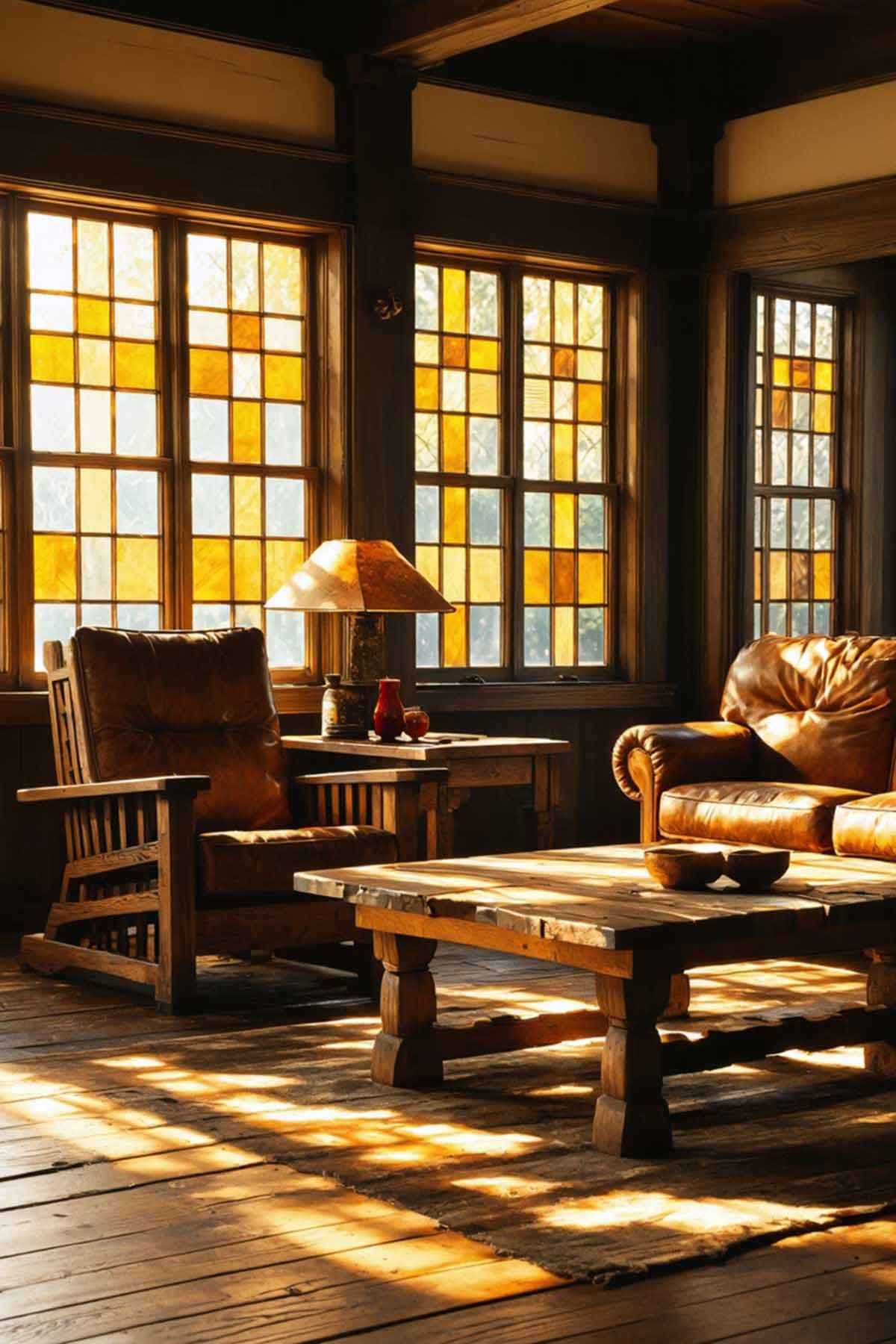
Where to Find Mission Style Living Room Furniture in Australia
Australia has many places to find mission style living room furniture. You can find both new and vintage pieces. Knowing where to look and what quality means is key.
Specialty Retailers and Craftsmen
In Melbourne, Bedshed and Tessa Furniture are known for their mission style. They focus on traditional joinery. Sydney has Berkowitz Furniture and The Wood Room for authentic mission-inspired collections.
These stores work with skilled craftsmen who value mission style heritage. They offer customization, like wood finishes and upholstery. In Adelaide, I saw craftsmen hand-cutting wood for mission pieces.
Cargo Lane a wonderful homewares shop in Bellingen (NSW) has some amazing Mission style furnishings. Their specialty in living rooms is leather lounges and some of their items are beautiful and made to last for decades
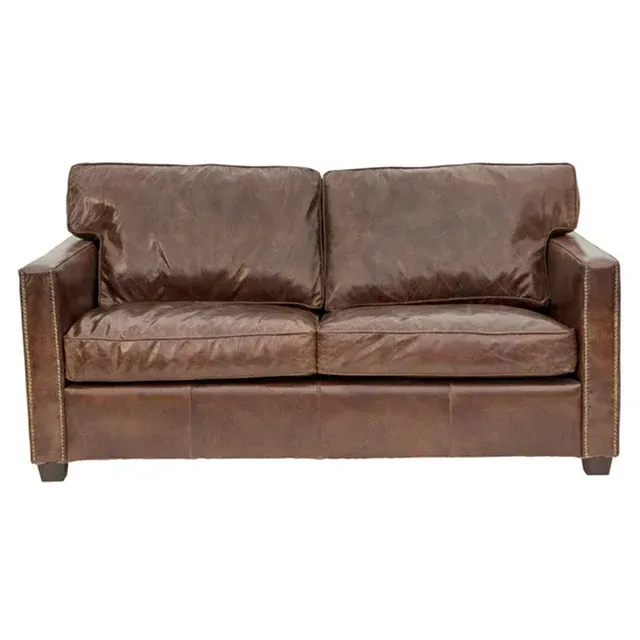
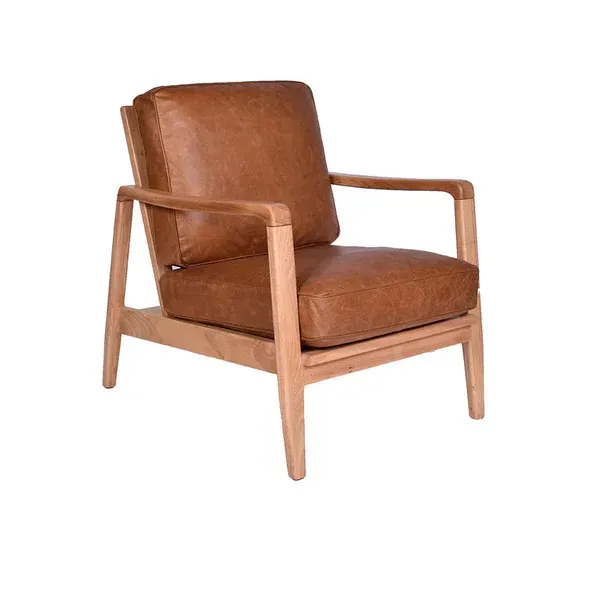
Cargo Lane West End leather sofa. Beautiful vintage leather, hand made and would last a lifetime if treated well.
Only $3,695.00
Check the sofa out on Cargo Lane's website
The four buckle leather armchair is upholstered in soft Colombian leather with the smooth clean lines of Mission decor.
$1995 with affordable shipping.
See it on their website.
Online Marketplaces and Importers
Online, Temple & Webster and April & Oak have great mission style furniture. They provide detailed info on materials and construction. This helps you choose without seeing the pieces in person.
Vintage and Antique Sources
For unique mission style furniture, try auction houses like Leonard Joel and Lawsons. Antique dealers in Woollahra and Armadale also have early 20th-century pieces.
Estate sales and clearances can be a goldmine. I once found a mission living room set at a clearance for a fraction of the cost. Online, Gumtree and Facebook Marketplace can have authentic mission pieces at good prices. But, you need to be careful and know what to look for.
When buying vintage, check the joinery and look for quarter-sawn oak. Minor repairs can make a piece last for many years.
Conclusion: Embracing the Timeless Elegance of Mission Style
In this guide, I've shared a lot about mission style furnishings. They can truly change how a room looks. Mission décor is special because it's simple yet elegant, making any space calm and inviting.
Many Australian homes have been made better with mission style furniture. The wood tones and simple designs add a cozy feel. A mission bookcase or a Morris chair can make a room perfect for reading or relaxing.
For those new to mission style, start with something small. A side table or lamp can add a touch of this style without changing your whole room. Mission furniture works well with both old and new décor.
What I love most about mission furniture is how long it lasts. In a world where things are often thrown away, these pieces show quality and care. They get better with age, gaining a beautiful patina.
When setting up your home, think about the lasting beauty of mission décor. These pieces are more than furniture; they're treasures that will warm your home for years to come.
FAQs
What are the defining characteristics of mission style furniture?
Mission style furniture has straight lines and exposed joinery. It often uses vertical slats and highlights structural elements. Traditional pieces are made from quarter-sawn oak, showing off its grain.
They use traditional woodworking methods and warm stains. The style favors earth-tone colors, enhancing the wood's natural look.
How did mission style furniture originate?
Mission style furniture came from the Arts and Crafts movement in the late 19th century. It was a response to mass production during the Industrial Revolution. Pioneers like Gustav Stickley wanted furniture to show the maker's skill and connection to natural materials.
This distinctly American design movement valued honest construction and simple design. It has remained popular for over a century.
What are the essential mission style pieces for a living room?
A mission style living room includes a sofa or loveseat with wooden arms. It also has a Morris chair and mission armchairs with slat backs.
Rectangular coffee tables and side tables with drawers are key. Bookcases or display cabinets with open shelving or glass doors are also important.
Why is mission style furniture considered a good investment?
Mission style furniture is durable due to solid hardwood and strong joinery. These pieces can last for generations. They have a timeless look that fits many design styles.
It's both practical and a financial investment, lasting for over a century.
How can I incorporate mission style furniture into a modern Australian home?
Balance mission pieces with modern elements. Light-colored walls help prevent dark wood from feeling too heavy. For Australian conditions, place furniture to show off wood grain without fading.
Use leather upholstery in warm climates and lighter stains for a cooler look. Mission furniture works well in indoor-outdoor spaces and with coastal styles.
How can I identify quality mission style furniture?
Look for traditional joinery like mortise and tenon joints. Quality pieces have smooth edges and corners. The finish should highlight the wood grain.
While quarter-sawn white oak is traditional, other woods like cherry and maple are also beautiful. Hardware should be substantial and functional, often in brass or bronze.
What accessories work well with mission style living room furniture?
Accessorize with restraint, as the mission style prefers simplicity. Choose lighting that matches the furniture's natural materials and geometric patterns. Use natural fibers and earth tones for textiles.
Window treatments should be simple, like linen panels or wooden blinds. Choose a few meaningful decorative pieces and art that complements the furniture.
Where can I find quality mission style furniture in Australia?
Specialty retailers like Bedshed and Tessa Furniture in Melbourne offer great mission style furniture. Berkowitz Furniture and The Wood Room in Sydney also have excellent pieces.
Online, Temple & Oak and April & Oak have curated collections. Pottery Barn and Restoration Hardware also offer mission-influenced designs. For vintage pieces, try auction houses or antique dealers.
What woods are typically used in mission style furniture?
Quarter-sawn white oak is traditional for mission style furniture, prized for its grain. Cherry, maple, and sustainable Australian hardwoods also offer beautiful interpretations.
Each wood adds its own unique touch while maintaining the mission style aesthetic.
How should I arrange mission style furniture in my living room?
Arrange furniture to create conversation areas, with pieces around a coffee table. Mission rooms often have furniture pulled inward for more intimacy.
Avoid cluttered arrangements and consider natural light. Position pieces to highlight wood grain and protect from sun exposure.
More living room posts

About The Author
I'm Channing and I am the driving force behind Platypus and Pine. I've had over 30 years of experience in designing, renovating and customising Australian homes.
I've used everything from aluminium to velvet as decor choices and love a wide variety of styles and themes.
My absolute favourite is Mid Century Modern and I was fortunate enough to spend 2 weeks in Palm Springs for Modernism week just last year.

